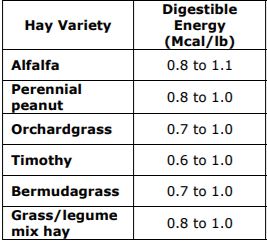Tuesdays with Tony
I will never understand how horses find dry grass appealing. And yet, according to my Docs, this is what their diet should be based on. Yuck! Nevertheless, here we are, about to talk about dry grass. I will say I have learned so much about hay over my many years. Allow me to drop some of that knowledge on you in this week’s edition of Tuesdays with Me.
Hay as an Art Form
To start this week’s edition, you should go thank a hay farmer. Boy, is that a tough job. First you need rain, but not too much, and at the right time. You need sunshine for a few days in a row when you cut the hay so it can dry. Then you need a dry place to store it because hay gets made in the summertime, and horses need more hay in the wintertime. You get the idea: hug a hay farmer. It’s not an easy life!
What version of dry grass is best?
Well, this gets complicated. Evaluating your horse’s lifestyle choices is step one. I myself am more of a Pasture Puff sort of guy. I prefer to call it intense supervision from a fixed position, but whatever. If I were a horse, I would need a roughage that was low in calories. Un-buttered popcorn, if you will. I found this cool chart of calories per pound of hay in an article written by Dr. Lori Warren from the University of Florida:

Now, if I was a high performance horse, I might need something different from my hay. Some of that need might be calories. This would make alfalfa a good choice. Being horses, it’s more complicated than straight up calories.
The Needs of the Athlete
The athletic horse has things it needs from hay that go beyond calories. Protein is a big deal for these guys. When hard work happens, muscles get tiny tears. It’s a normal part of muscle building. Tendons and ligaments get these same little tears. Even bone gets micro-fractures. It’s all part of building a better athlete. To repair and strengthen all these tissues, the equine athlete needs lots of protein, and a decent amount of minerals like calcium and phosphorus. Since hay should be the biggest part of the diet, it’s important to know where your hay stands on these important ingredients. For example, if you’re feeding alfalfa to your horse you may be able to get fewer calories, protein, and calcium from grain. If you’re feeding the same horse timothy, you may look for a grain with more calories and protein. There’s a definite balance that needs to happen. That’s why there are equine nutritionists.
The Needs of the Fickle Equine Gut
Non-horse people look at a horse in a field and think things like “How majestic,” and “He’s beautiful.” Horse people think, “I hope he’s used to all that grass or he’s gonna colic.” This is why roughage is important. Sure, you want bulk, but you also want what makes your particular equine happy. Here in Florida where I live, we have a type of hay called Coastal. It’s a great middle of the road hay. A little higher in calories, a little lower in protein. Locally grown, so the price is right. Unfortunately, the equine GI tract is less happy with straight Coastal. A horse eating nothing but Coastal is very prone to a very specific type of colic called an ileal impaction. Luckily, most of these are readily fixed with a visit from one of my Docs. Even better, they can be prevented by adding a bit of peanut or alfalfa to the diet along with the Coastal. We also see horses who are allergic to different types of hay, with alfalfa being the most common one. These allergies normally make themselves known by causing diarrhea. However, hay allergies can also cause itchiness. Very rarely we have a horse manifest their hay allergy with extreme behavior changes. This is where the Legend that alfalfa makes a horse crazy comes from.
I can hear it now: But Tony, alfalfa really does make my horse crazy. I’m not saying it doesn’t. I’m saying it has more to do with your horse being allergic to the hay than the protein or calorie content of the hay.
What’s the best answer then?
The best answer is going with the highest quality hay you can get away with based on your horse’s lifestyle and calorie needs. Sounds simple, but I know sometimes it’s not easy! Speaking with an equine nutritionist, or one of my Docs, can help you make the best, right decision for your horse, your life, and your area!
Want even more Springhill Equine wisdom? Subscribe to my blog by scrolling down a tiny bit further.
Until next week,
Tony
P.S. Have you checked out the completely fabulous Springhill Equine podcast, Straight from the Horse Doctor’s Mouth yet? You can listen to it right on my website by clicking here, or you can download it wherever you get your podcasts. Don’t have a podcast app? You can download one free right from the PlayStore. Stitcher and Spotify are both popular, but there are lots of others as well. It’s also on iTunes, for all you Apple people. Episode 8 comes out this week, and it’s all about Lameness. Don’t miss out!
[jetpack_subscription_form title="Subscribe to Whinny's Wisdoms"]
Tuesdays with Tony is the official blog of Tony the Clinic Cat at Springhill Equine Veterinary Clinic in Newberry, Florida. For more information, please call us at (352) 472-1620, visit our website at SpringhillEquine.com, or follow us on Facebook!
